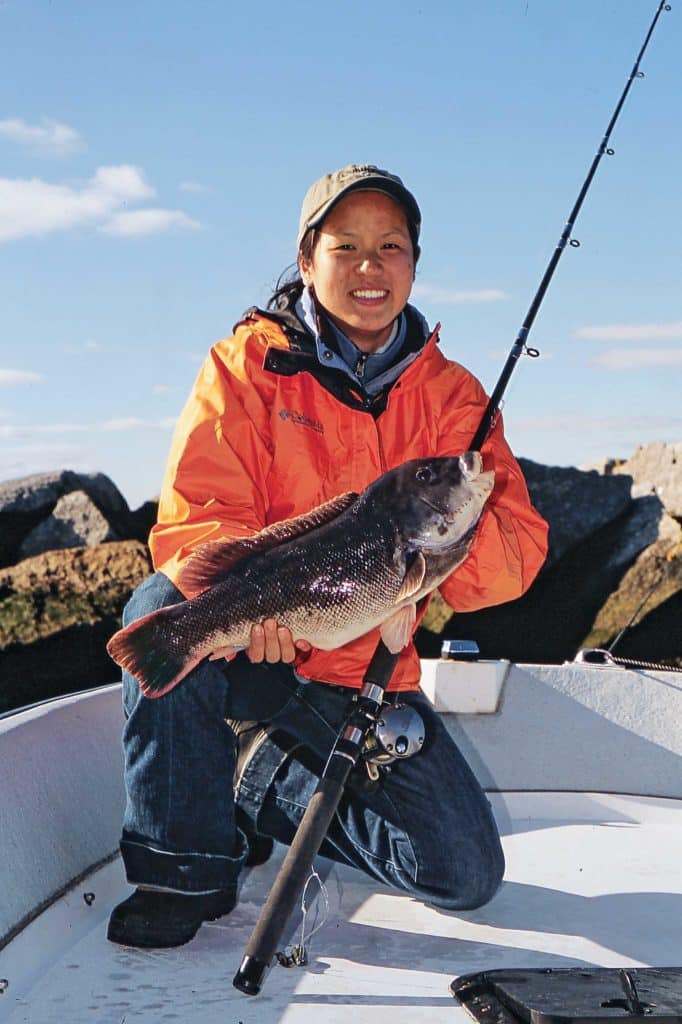
One day last October, tautog expert Rich Haigh and I were bridle-anchored alongside a massive breakwall outside Connecticut’s New Haven Harbor. Our baited rigs probed deep holes among the boulders beneath the boat. In less than two minutes, Haigh’s first hit came as a subtle tap, followed by gathering weight.
Rather than yanking hard, Haigh stood up smoothly, slowly lifted his rod tip skyward and started reeling as the tiderunner slammed a curve into his rod. “I’m on!” he stated smugly. “It’s a good one. Can you grab the net?”
“Sure!” I said and gently raised my bent rod. “As soon as I land mine.” The action began fast with a brace of white-chin blackfish, a mere sample of what was to follow. With over an hour of prime tide still ahead, we knew we were in for two limits followed by fist-bumping catch-and-release action until we exhausted our bait supply.
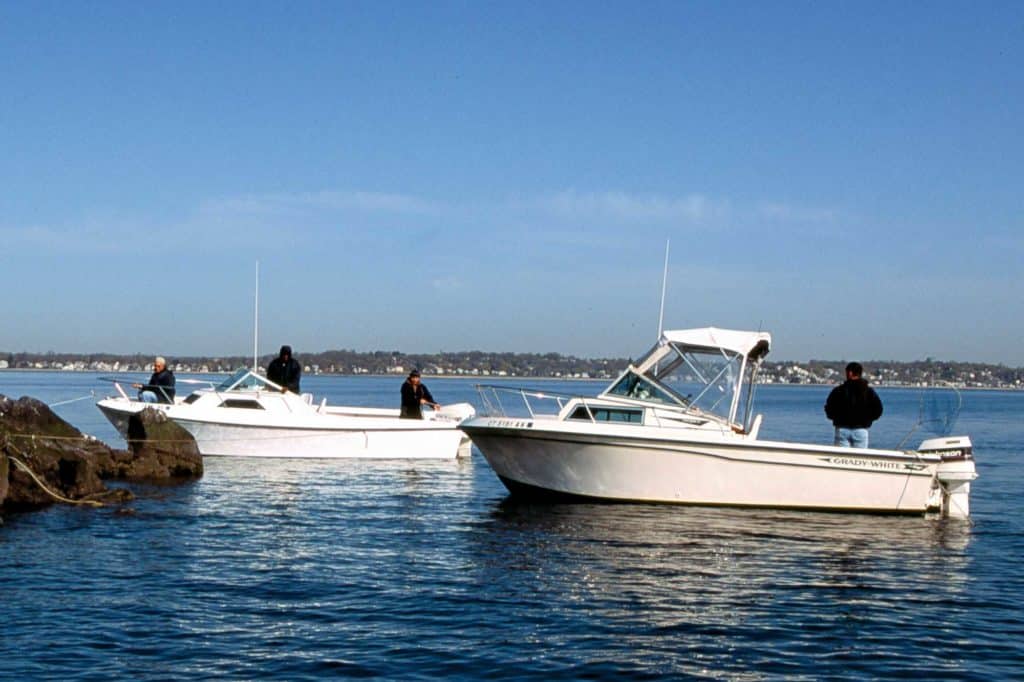
SWS Planner
Trophy Tautog
When: Early October through mid-November
Where: Southern New England
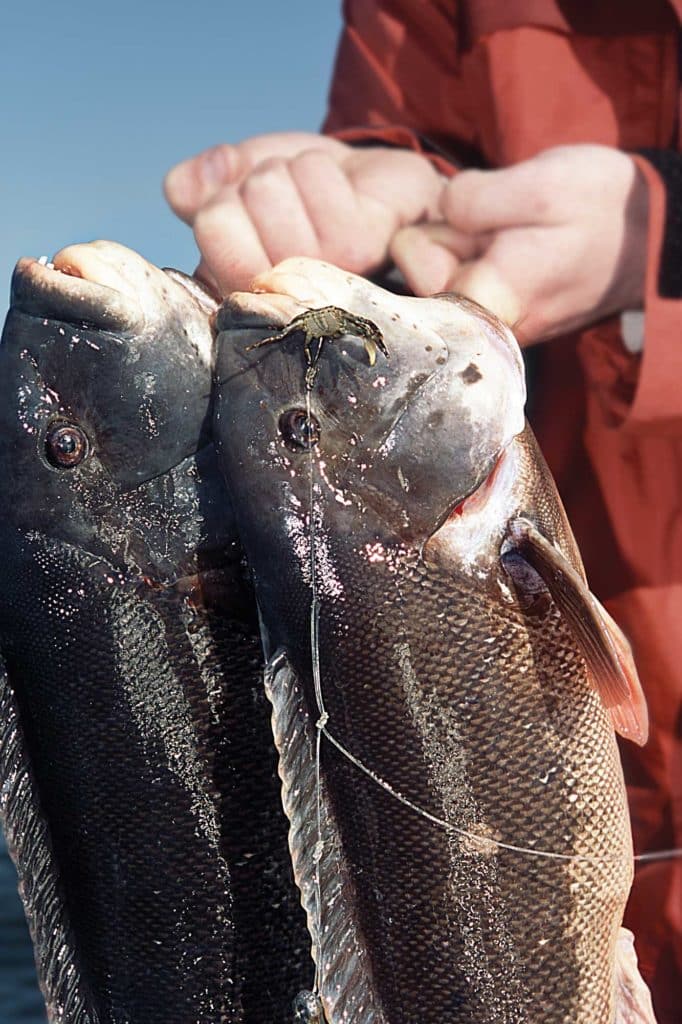
BEST GAME IN TOWN
As the push of striped bass, bluefish and false albacore wanes in southern New England, tautog — aka blackfish — remain the only inshore game in town. They fight like crazed bulldogs, and as table fare, you can’t beat their sweet, white meat.
But with lots of competition on the hot spots, becoming a productive tautog fisherman takes knowledge and skill. Top anglers understand staging locations, shifts in water temperature, tides and special techniques designed to pull tough fish from gnarly lairs.
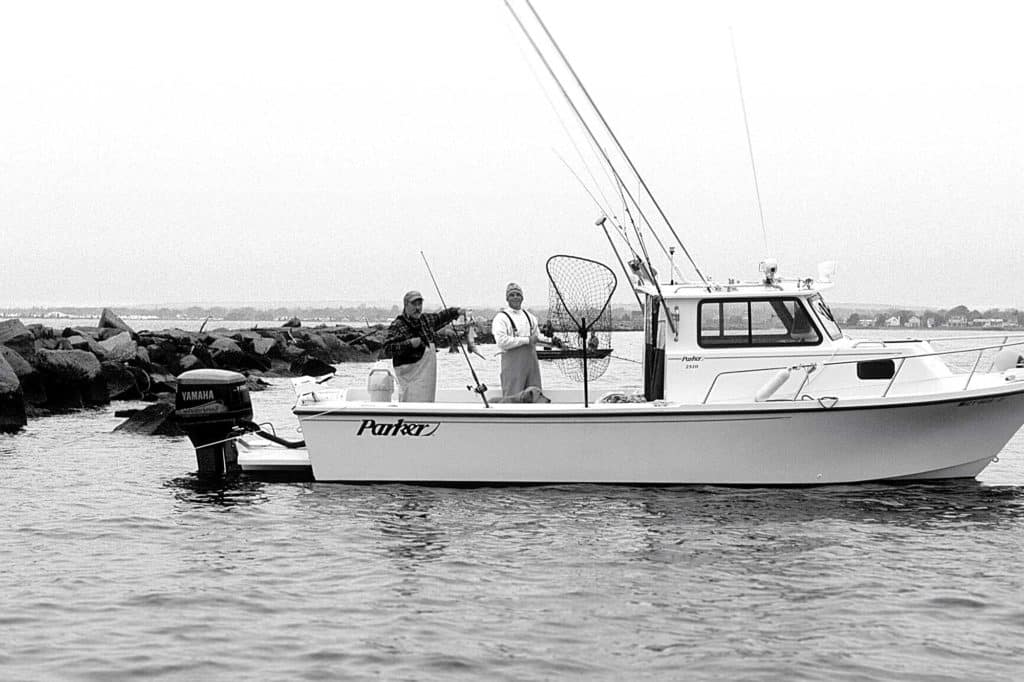
‘TOG WHEREABOUTS
Blackfish hangouts change as autumn progresses. They start in shallower water in early October, gradually migrating to deeper water as winter approaches. But the well-known locations quickly become depleted.
“Blackfish are territorial,” says Capt. Kerry Douton, a pro for over 40 years and owner of J&B Tackle in Niantic, Connecticut, “and that means good spots get fished out fast. When blackfish move in, they stay in that location — that’s their home for the season.
“Once they’ve been caught from a reef, a new group doesn’t just move in. So when you’re on a promising spot at the right tide and don’t get any bites, you need to move. It’s not as if you can stay there and wait for the fish to swim in.”
A sure sign that a favorite spot is fished out is a steady pick of shorts. Those ’tog have been caught and released, sometimes repeatedly, while the keepers have been culled. Pros then seek unmarked and more distant structure because such locations are harder for the average angler to find and fish. Blackfish also vanish from a hot spot due to falling water temperature.
“When the water drops into the high 50s,” says Douton, “the blackfish start to migrate. In October, you’ll find them all in shallow water, but then they start moving. In the first two weeks of November, it’s a mix. You can catch fish in shallow water, but you can also catch them in deeper water. From the second week of November on, once the water drops below 50 degrees, they’re only in deep water. The trick is to follow the fish out based on the water temperature.”
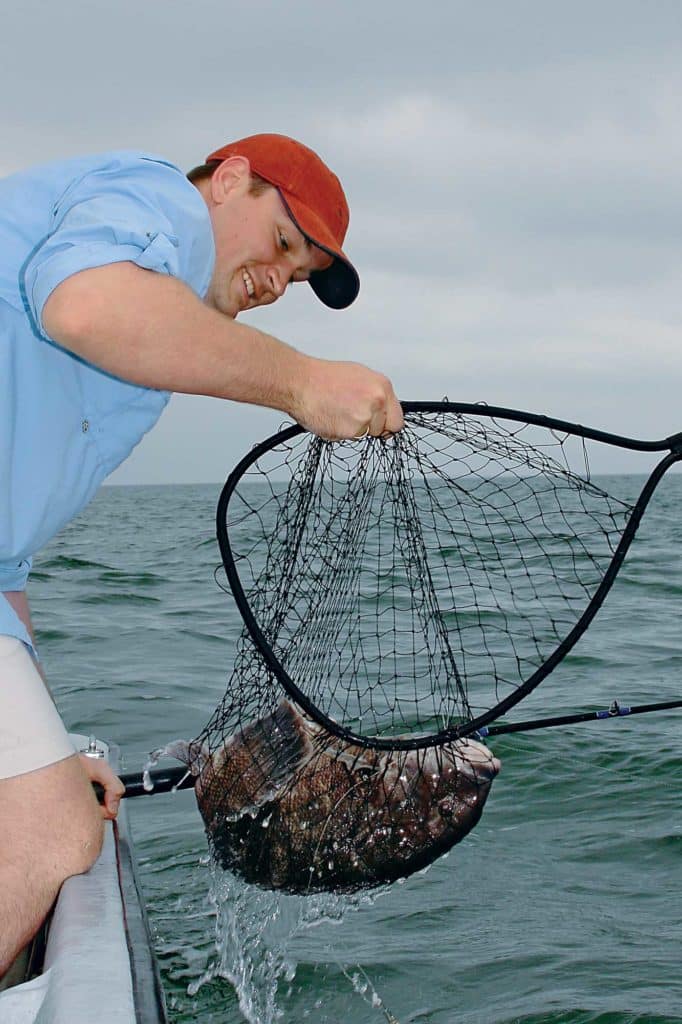
POSITION TUNING
When choosing a place to fish on a reef, pinpoint the highest spot. Edges of structure are good too. Any kind of wreck is also excellent. Anchoring on high spots is tricky because it’s easy to swing off to one side — a few feet from target usually means no action.
“Be prepared to make some moves,” says Douton. “Sometimes you have to re-anchor two or three times on the same spot because of the conditions. A weakness of many ’tog fishermen is they’re not willing to do that. They run out, drop the anchor and just sit there. They’re not willing to do the extra work that produces fish.”
Some of the best go-to blackfish hot spots are breakwaters located outside many harbors. But these walls require special techniques, and anglers benefit from a deadly rig that Haigh has refined over the years.
Blackfish nestle into the deep gaps and holes of walls where they forage for crustaceans, mussels and barnacles. Knowing this, breakwater experts don’t just randomly lower their baited hooks overboard; they actively seek out tautog lairs.
“Drop your sinker to the bottom,” explains Haigh, “and tap the rocks with the weight as you slowly move your rod along the gunwale until you find a hole, which is usually 5 to 7 feet deeper. Lower your rig into the hole until it hits bottom again, then wait for a bite with a tight line. ’Tog tend to cluster, so they’re not in every hole, and being only a few feet off the hot spot means no bites.”
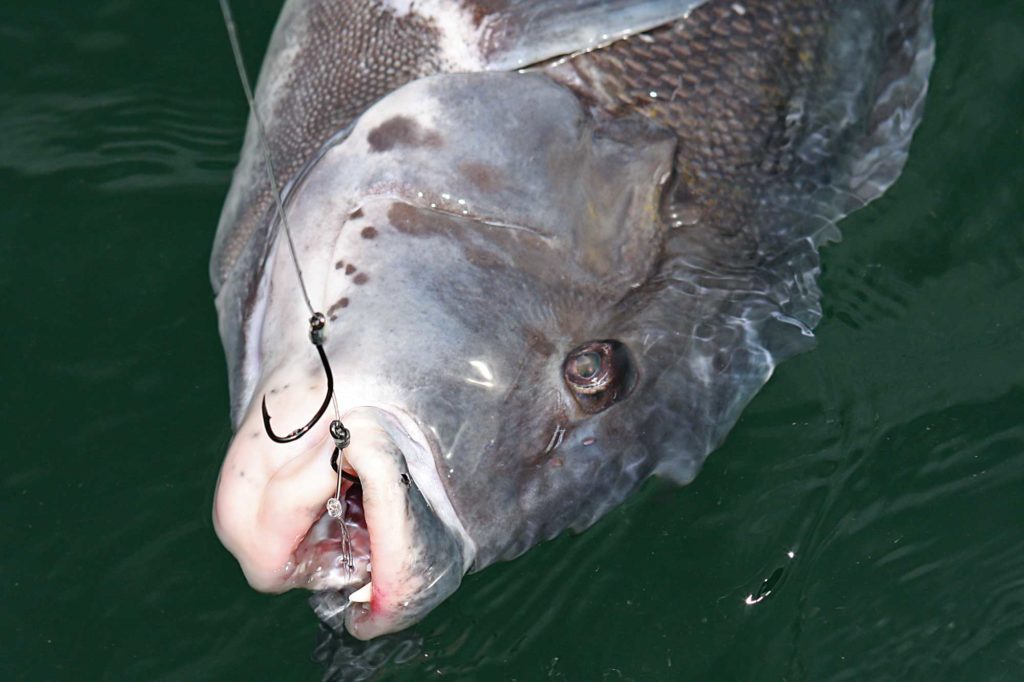
FIGHT TIME
Dropping your baits into a populated hideaway is half the trick. The real challenge is wrestling a big fish out of a small gap. Once hooked, tautog dash for the nearest cranny, and they are tough to pull out.
“The key,” says Haigh, “is don’t strike hard. Instead, lift the rod high, slowly and gently. Your rod bends from the weight, but done correctly, the fish doesn’t realize what’s going on. With the right hook, you won’t need to drive the barb home. When you finally lift the fish from its hole, it goes crazy. So set your drag tight. Once you’ve cleared the rocks, back off on the drag to fight the fish.”
Haigh’s biggest breakwall secret, however, is his rig. By nature, fishing in holes leads to snagged hooks and lost fish that dash for cover, often due to the use of high-low rigs with long, commercially tied leaders. Haigh’s design incorporates a pair of hooks snelled in-line on 50-pound leader, down near the sinker. It’s equally effective on rugged reefs or modest rocky bottoms.
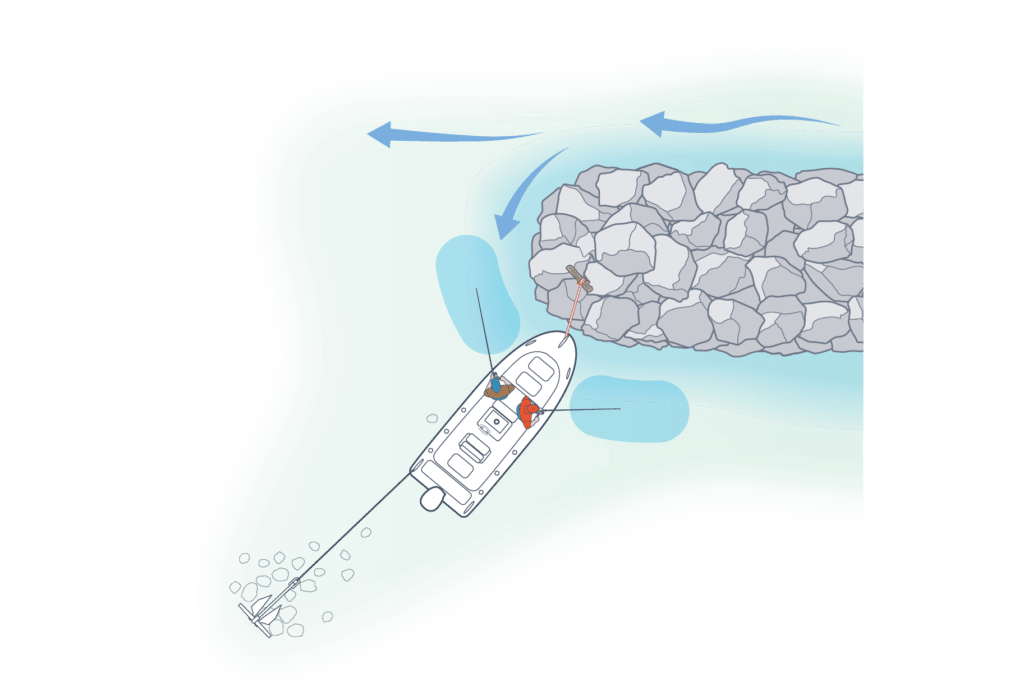
RIG SAVVY
The fluorocarbon leader with hooks snelled in line is attached to 3 feet of 80-pound mono before the main line. “The heavy mono,” says Haigh, “gives abrasion resistance in the holes, and you can wrap it around your hand to lift fish into the boat.”
After bleeding and icing eight thick-shouldered white-chins, Haigh and I retrieved our anchors and powered toward the harbor. The chilly air reminded us there weren’t many days left in the season, and we were glad we spent one of them with our backs against a wall.
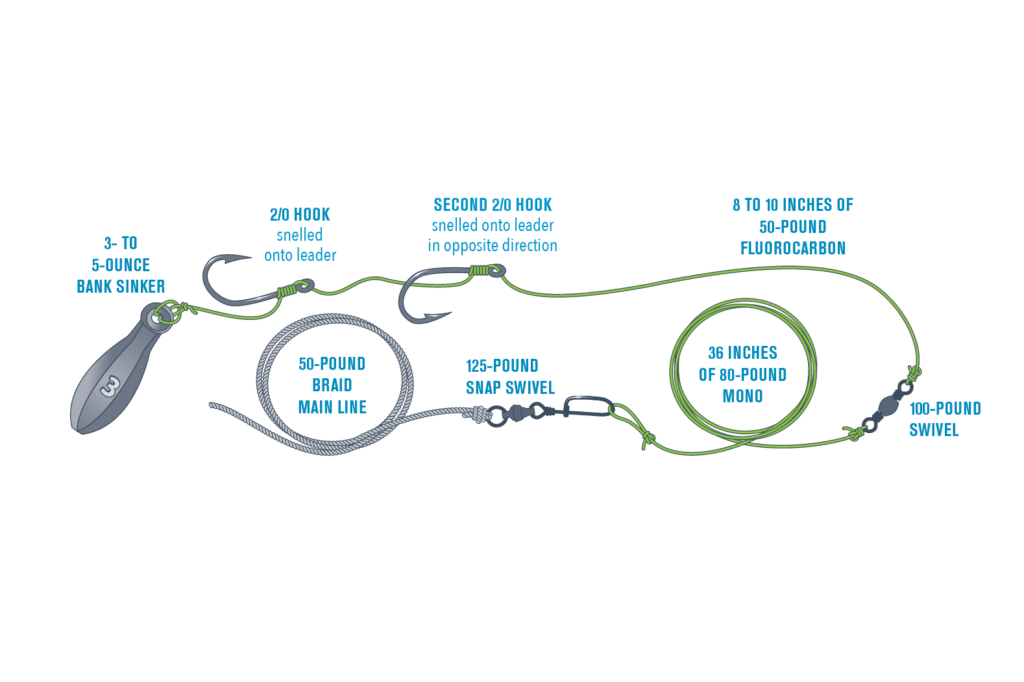
SWS Tackle Box:
Trophy Tautog
Rods: 6½-foot medium-heavy, fast-action, conventional boat rods
Reels: 3/0 conventional level wind reels with good drags
Lines: 30- to 50-pound braid top shot over 40- to 50-pound mono backing
Leader: 18 inches of 50-pound fluorocarbon attached via 100-pound swivel to 36 inches of 80-pound monofilament clipped to 125-pound snap on the end of the fishing line
Terminal Gear: 3- to 5-ounce bank sinkers, 2/0 to 3/0 Gamakatsu or Owner octopus-style hooks
Baits: Whole Asian crabs or halved green crabs
Other: Have two dozen rigs ready to reduce turnaround time from lost terminal tackle. If in-line snelling is too difficult, shorten commercially snelled blackfish rigs.









